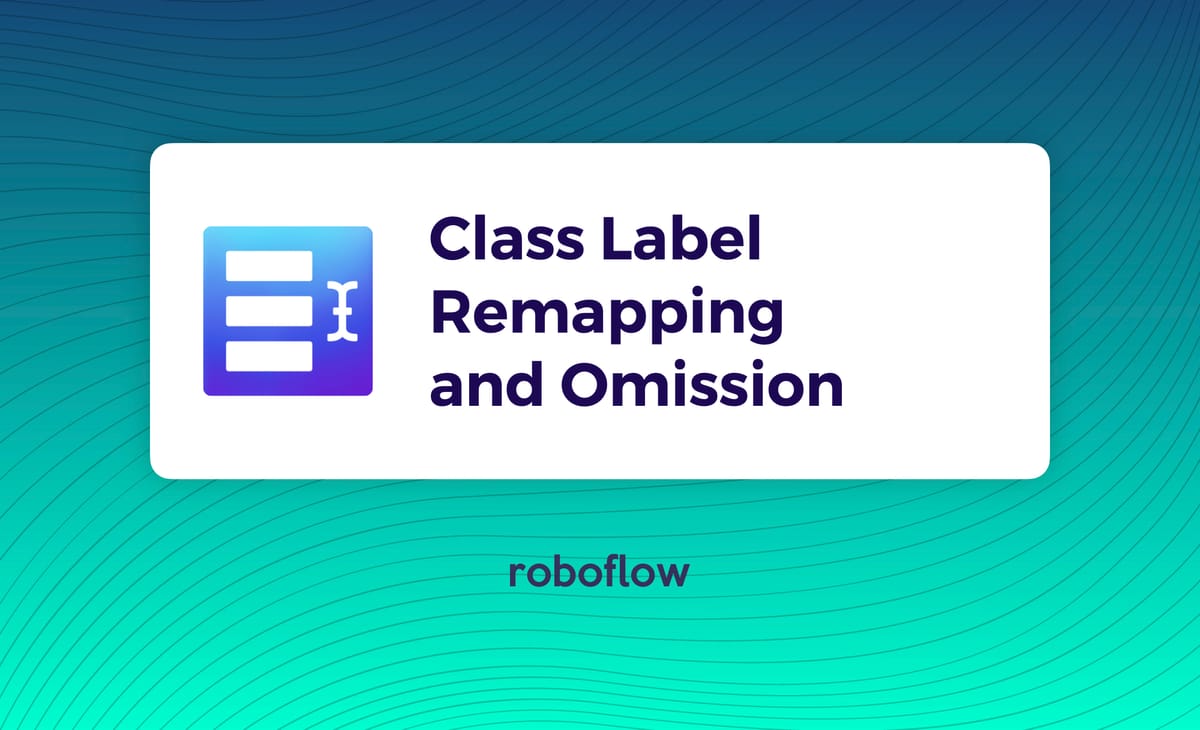
Manage your class labels quickly and efficiently with Roboflow.
After you have collected an annotated object detection dataset, you may often want to change the class labels of your objects after the annotation process is complete. With the introduction of Class Label Remapping, you can now remap and omit class labels within the Roboflow platform.

Class label remapping and omission allows you to fix computer vision labeling errors and turbo charge your computer vision model creation exploration process, allowing you to quickly adjust the scope of your detector.
How to Remap and Omit Class Labels in Roboflow
Within the Roboflow platform, navigate to your dataset's page, proceed to Generating a new version by selecting Generate New Dataset and click to Add Preprocessing Step.

Then choose Modify Classes.
You will then be presented with the following screen:

You can see here that we have renamed our white chess pieces to a more generic class name of "white" and our black pieces to "black". Furthermore we have excluded the class annotations that have to do with "black-queen".
Hit Apply to save. Now, when you finish your other preprocessing and augmentation settings and click Generate the dataset version will export with these new class label settings.
Using Remap to Fix Labeling Errors
Often times, you may receive data back from a labeling job that contains minor errors. Labels may be misspelled or out of scope. You can quickly rename and omit these problematic annotations with the new remap feature.
Using Remap to Explore and Scope Model Creation
Often times, you will set out to annotate more objects than current modeling technologies will be able to handle accurately. For example, I may collect and annotate a dataset to differentiate cars based on their make and model (Toyota Corolla, Chevy Volt, Tesla Model S, etc.) . However, when I train my detector, I might find that the model does a poor job on box class prediction. Hence, I might then run another experiment with the same dataset by collapsing all car models within the same make into the same class (Toyota, Chevy, Tesla, etc). With this reduced complexity, I might find that my model is much more performant.
Using Omission to Address Under-Represented Classes
When embarking on a labeling job, it is hard to know how many objects will end up appearing in a dataset. You may end up with a class imbalance on Roboflow's dataset health check.

Through reasoning and experimentation, you might decide that you did not collect enough of one class to be able to accurately train a detector on a sparse dataset. In this case, you should omit the underrepresented class from your model's semantic space.
Using Omission to Address The Overlapping Label Problem
Your dataset may have annotations for classes that overlap on an object. For example, all boat lifts in our aerial maritime object detection dataset are contained within the dock label. Since loss calculations are based on local pixel predictions, it can be difficult for a model to learn to predict both dock and lift at the same time. In this case, it might be more important to pick which class you really care about detecting, and omit the other overlapping class.
Using Remap to Increase Training Data After A Merge
Let's suppose we are building a detector to count the number of ambulances seen by a self driving car. In this case, we may gather a collection of ambulance images and label them. However, most of the time our model will not be encountering an ambulance. So we may consider adding a self-driving cars dataset with cars, buses, trucks, and motorcycles to our dataset. We can merge these new images and remap their class labels to "not-ambulance".
Conclusion
With Roboflow Pro, you can now remap and omit class labels within Roboflow as a preprocessing step for your dataset version.
Class management is a powerful tool to get the most out of your training data and your hard earned class label annotations.
Cite this Post
Use the following entry to cite this post in your research:
Jacob Solawetz. (Jul 7, 2020). Introducing Class Label Remapping and Omission. Roboflow Blog: https://blog.roboflow.com/introducing-class-management/
